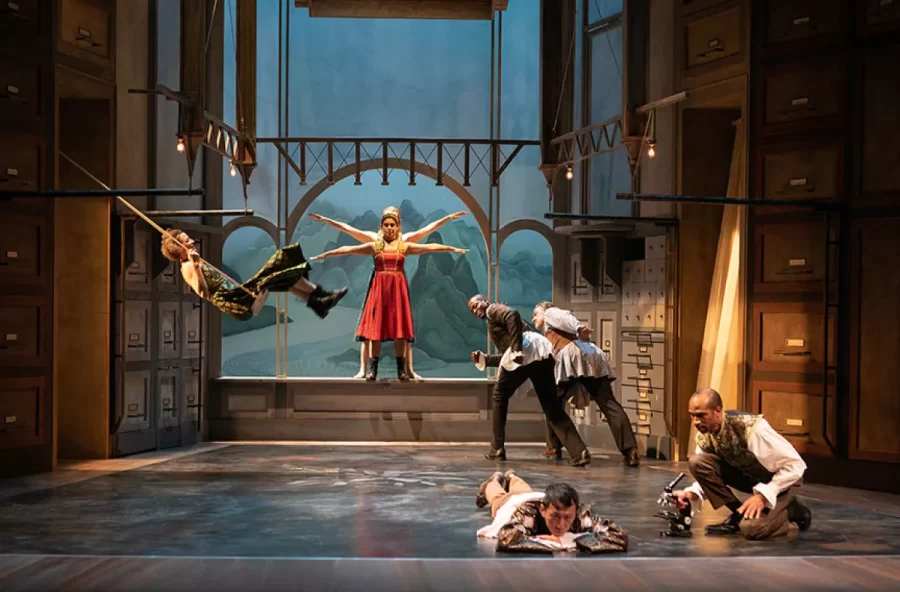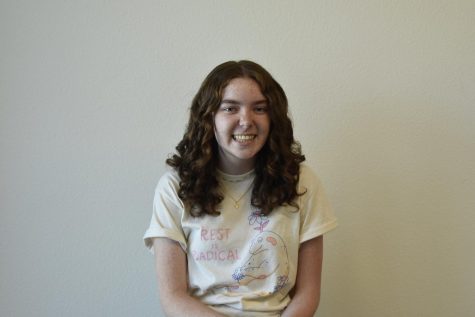Experimental play inspires locals
A da-lightful look at da Vinci
February 14, 2023
In “The Notebooks of Leonardo da Vinci” by Tony-award winner Mary Zimmerman, “time is made of the movement of instants.” The 90-minute play is made up of many magical instants and follows no linear plot. Texts from the renaissance artist’s extensive notebooks reveal the inventions he pursued between painting “The Mona Lisa” and “The Last Supper”. The play is a multilingual, multimedia piece about a multidisciplinary genius. Originally produced in 1993 in Chicago, the experimental play is now running at The Old Globe theater in San Diego until February 26.
“The Notebooks” examines the inventor-artist’s life, and the loneliness of discovery, creating moments of physical study onstage. We see his relationship with a young apprentice, a dove, and his younger self, and how his philosophies changed as he grew older. Zimmerman, the show’s writer and director, said she believes that “any time you fall out of your busyness and attend to the wonder of the world, that is the Leonardo in you” and that everyone has a piece of that within themselves. As such, the cast is a diverse ensemble of eight, all playing the artist at different times in the show.
The intermissionless play joins choreography with monologues, acrobatics with tableaux, and inventive props with larger set pieces to bring da Vinci’s memories and reflections to the stage. In these moving pictures, we see a complicated, caring man who was in love with the minutiae of life. The cast’s Leonardos are transfixed by natural phenomena and the human form, and even create their own art on giant pieces of butcher paper. The interdisciplinary study of both science and art comes through in the production, with some scenes blending the disciplines using ideas including perspective and gravity.
The set is its own work of art. The stacked file cabinets and playground-like bars are deceptively simple, and change throughout the piece, unfolding and rolling out. The audience discovers the secrets built into the towering walls as the actors do, which further cements the themes of collective learning and community. Actors almost float around the stage and, at more than one point, water is revealed, adding a similar magic to the pool previously seen in Zimmerman’s acclaimed “Metamorphoses.”
The actors have been described as chameleon-like, and it’s easy to see why. They go beyond the bounds of gravity and traditional blocking. The choreography relies on connection, both among cast members and between the performers and the set. There are moments of just movement, where words can’t capture what’s being conveyed, and mirroring scenes where the actors appear in dialogue through their bodies, falling slowly in sync.
Later, the choreography blends into the musical score using body percussion, adding a playful contrast to the sweeping orchestral arrangement. The score was custom-created for this piece by Michael Bodeen, and is a Broadway-level treat. It is totally immersive, and the strings add fullness to what could have been a simple accompaniment.
The universal genius of da Vinci is apparent in every piece of the technical and artistic work that went into the production. Rather than medical and impersonal, his discoveries are made universal, his methods painted with curiosity. “The Notebooks of Leonardo da Vinci” is a triumphant collaboration, and a testament to Zimmerman’s writing and artistry. It is a contemporary classic, leaving audiences awestruck and inspired.


